Cumbria's 'striking' county flower thriving on the fells
- Published

The delicate white flower gets its name from the translucent green strips on its petals
A flower with an exotic but misleading name, which was once declining, is now blooming across Cumbria with pockets spotted across the fells.
Grass-of-Parnassus is the county flower seen on the Cumberland county flag and also on Cumberland Council's logo.
Once widespread across the UK, it has declined in enclosed farming areas where wetland habitats have been drained for better yields.
But experts say less intensive grazing has helped the plant to thrive.
John Hooson, nature conservation adviser for the National Trust, said: "It's such a striking plant with it's interesting flower structure having distinctive star petals with green veins and then a pink coloured nose cone in the centre and yellow stamen."
This time of year is the best time to spot the wetland plant, also known as Parnassia palustris or by the less glamorous name of Bog-star.
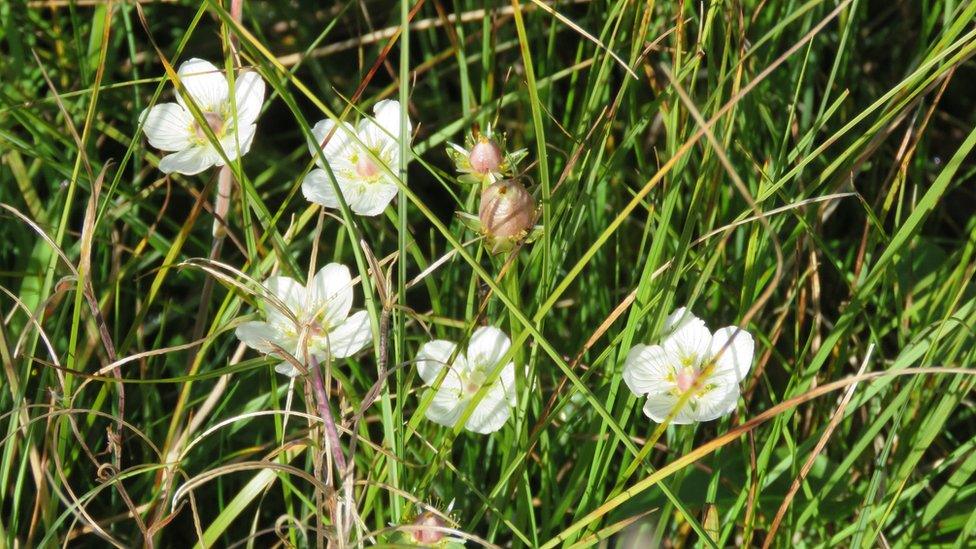
The native county flower is thriving at Eycott Hill Nature Reserve
Kevin Scott, Northern Reserves officer at Cumbria Wildlife Trust, said it was flowering at Eycott Hill near Penrith among the nature reserves' series of swamps and mires.
"It's abundant here due to the a mixture I think of acidic and base-rich habitat, from my understanding I would say grass-of-Parnassus likes a limestone-base rich habitat.
"It has been at Eycott for many years and is much more abundant than it was say eight years ago."
The 220-hectare reserve boasts about 20 species of wetland plants as well as grass-of-Parnassus which blooms from July to October.
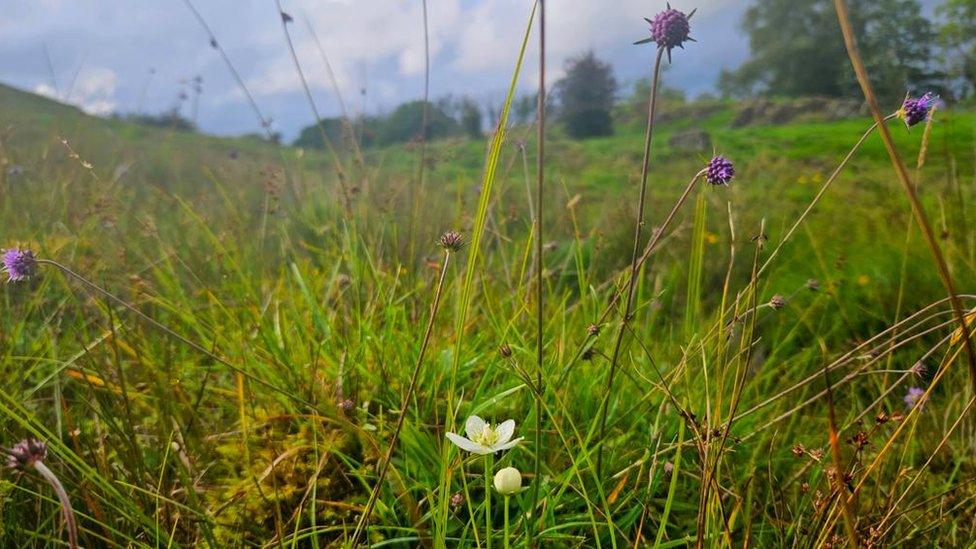
The bloom growing alongside Devil's-bit scabious at Mislet Scroggs near Windermere
Another area where it is a common sight is Mislet Scroggs near Windermere, a rough field on the side of a fell and home to a farm.
Mr Hooson added: "It's a northern species which might have been more widespread across the country, but intensive farming in the south has seen it wiped out. But here in Cumbria, farming is not so intensive and it can be found in almost every valley of the Lake District.
"It's got an exotic name which is misleading as it doesn't look like a grass, I'm not sure where the name came from and that makes it mysterious," he said.
Mislet Scroggs is an area rich in wildflowers possibly because it has not been grazed by sheep for about 100 years.
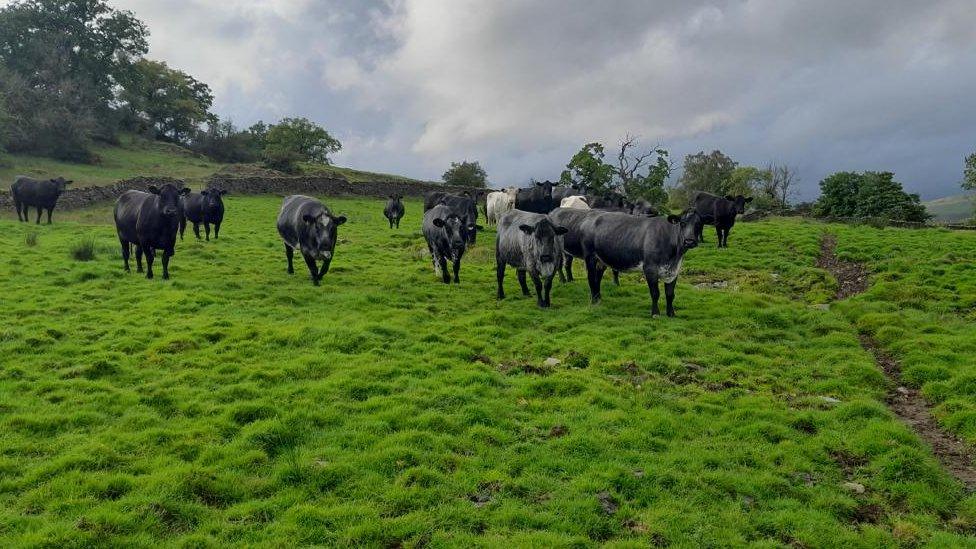
Only cows graze at Mislet Scroggs which it is believed has helped wildflowers to thrive
One fell farmer Paddy Deady who farms at Troutal in the Duddon Valley said in all his years living and working in Cumbria he had only seen the flower once at Yewbarrow in Wasdale.
"It struck me how sad it was that a flower associated with the county should be so rare.
"I'm not a botanist but as I was gathering, I spotted it in a wet patch of land and found a little more out about it and I was surprised I didn't know more," he added.
"I'm pretty sure most Cumbrian's don't know it's our county flower, I was astounded we've got this emblematic flower and we just don't see it."
Mr Deady is hoping his work as project manager for the new Upper Duddon Landscape Recovery Project could see it propagated and reinstated across more fells.

The Cumberland County flag depicts the striking white flowers
"We don't know if we've got it in the area yet as the results of a survey are due at the end of September, but with the work we're doing to restore habitats, we'd like to gather seeds and plant them and hopefully get more clusters of the grass-of-Parnassus going," he said.
A feature of the county flag, which depicts three of the white flowers, it was also chosen as the official logo of the recently formed Cumberland Council.
A spokesperson for the authority said it picked grass-of-Parnassus as it wanted branding that was "modern, clean and flexible in its design" and represented "aspects of Cumbria's heritage and landscape."

The flower was adopted as Cumberland Council's logo after being picked from a shortlist of about 50 others

Follow BBC North East & Cumbria on Twitter, external, Facebook, external and Instagram, external. Send your story ideas to northeastandcumbria@bbc.co.uk, external.
Related topics
- Published31 July 2023
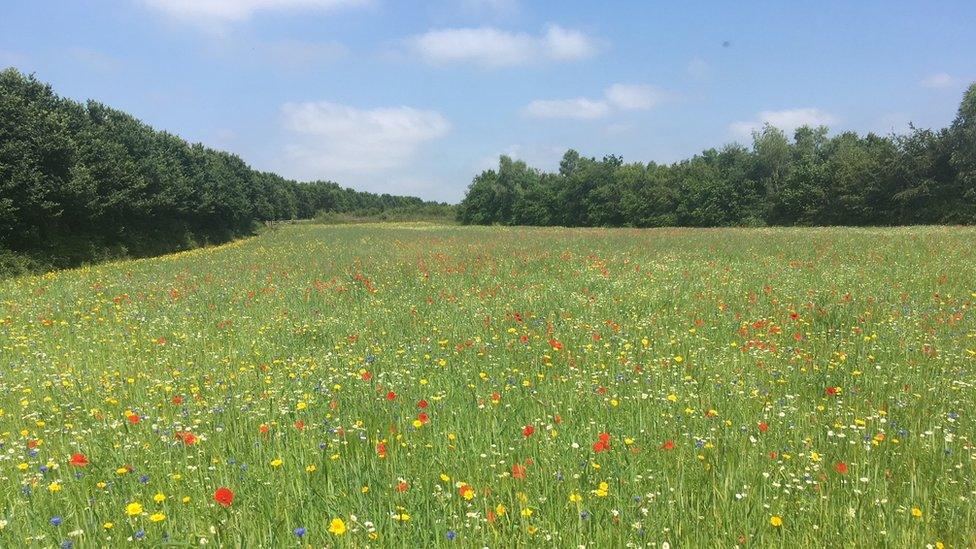
- Published11 April 2023
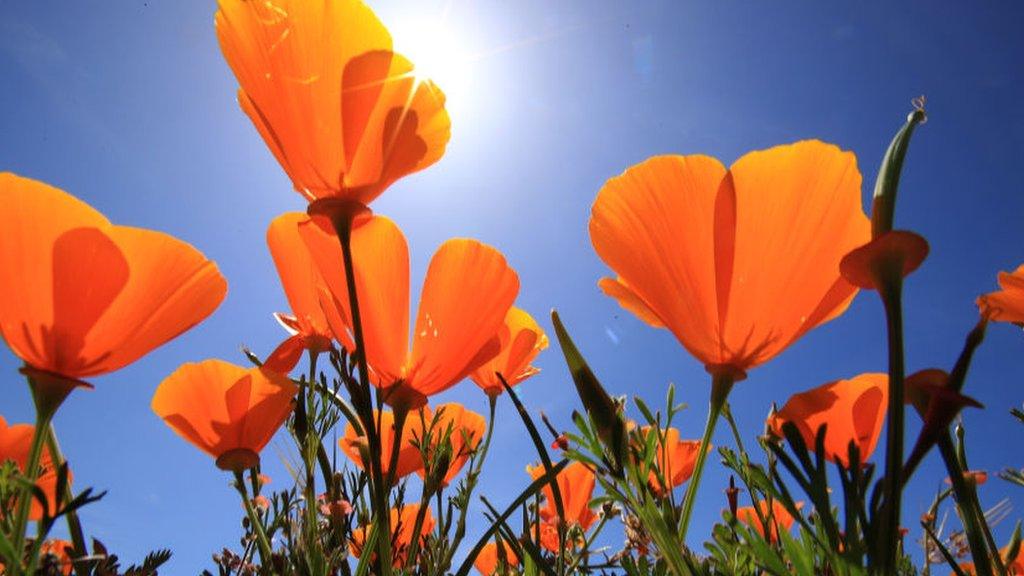
- Published28 August 2022
